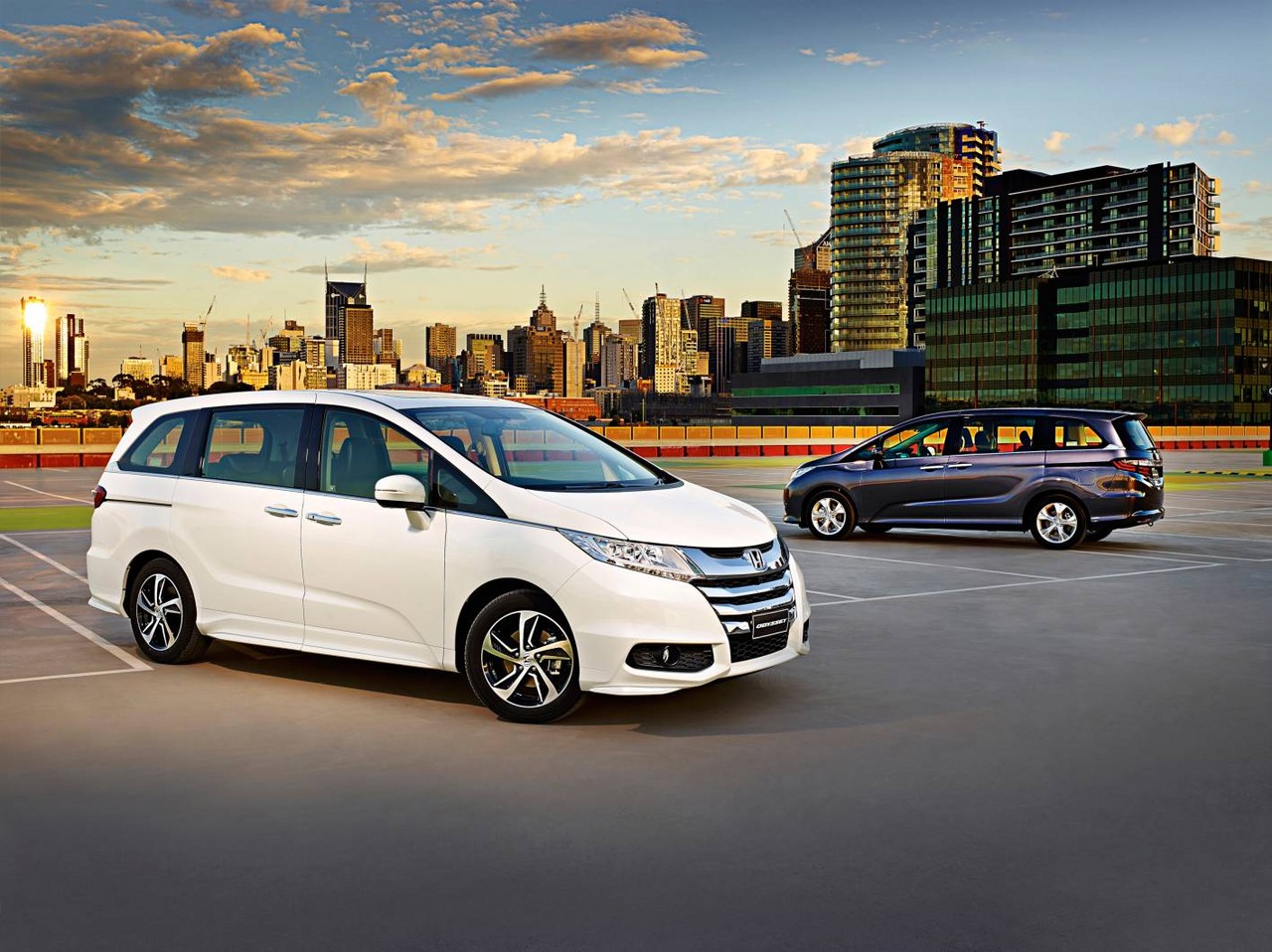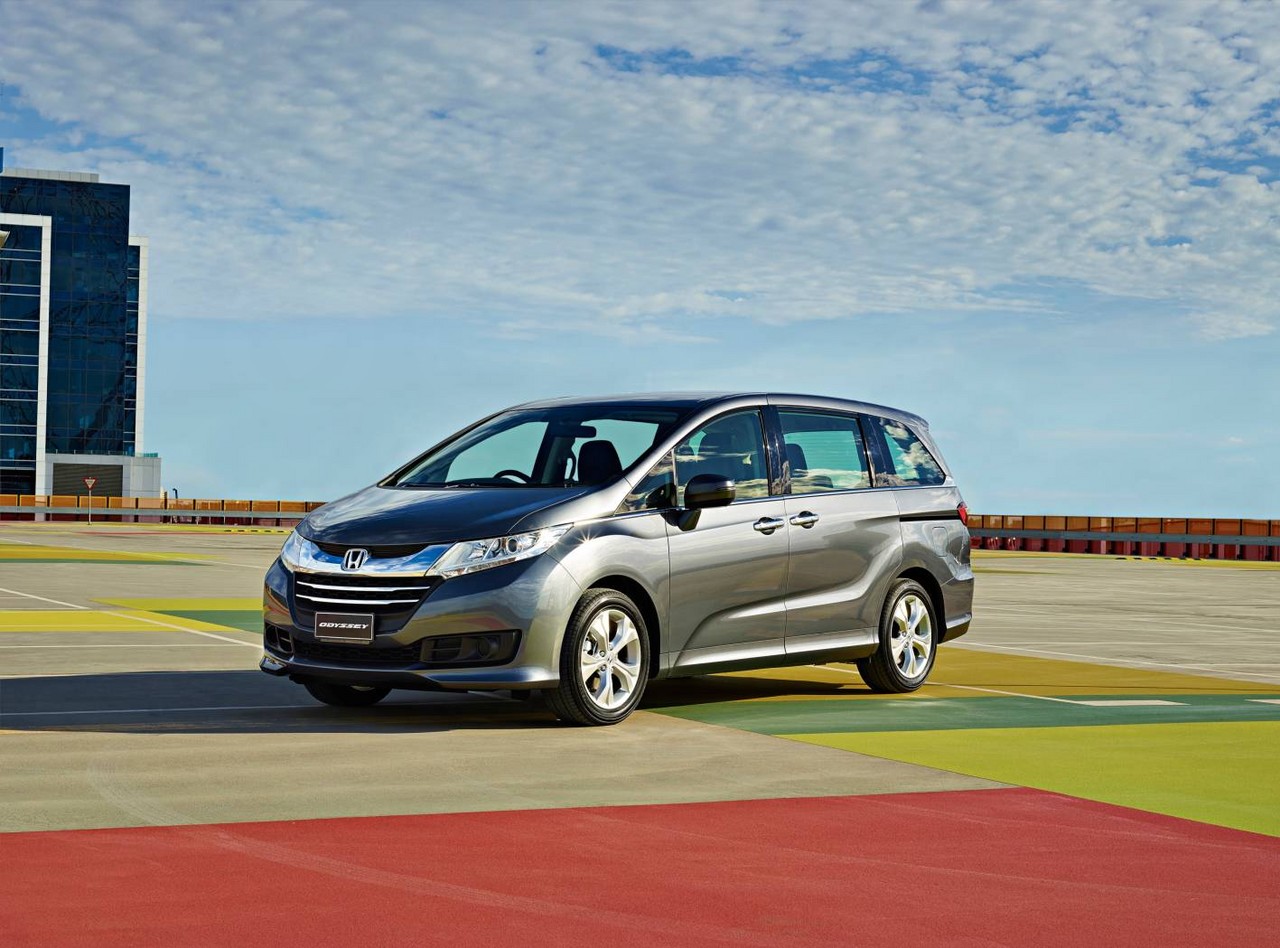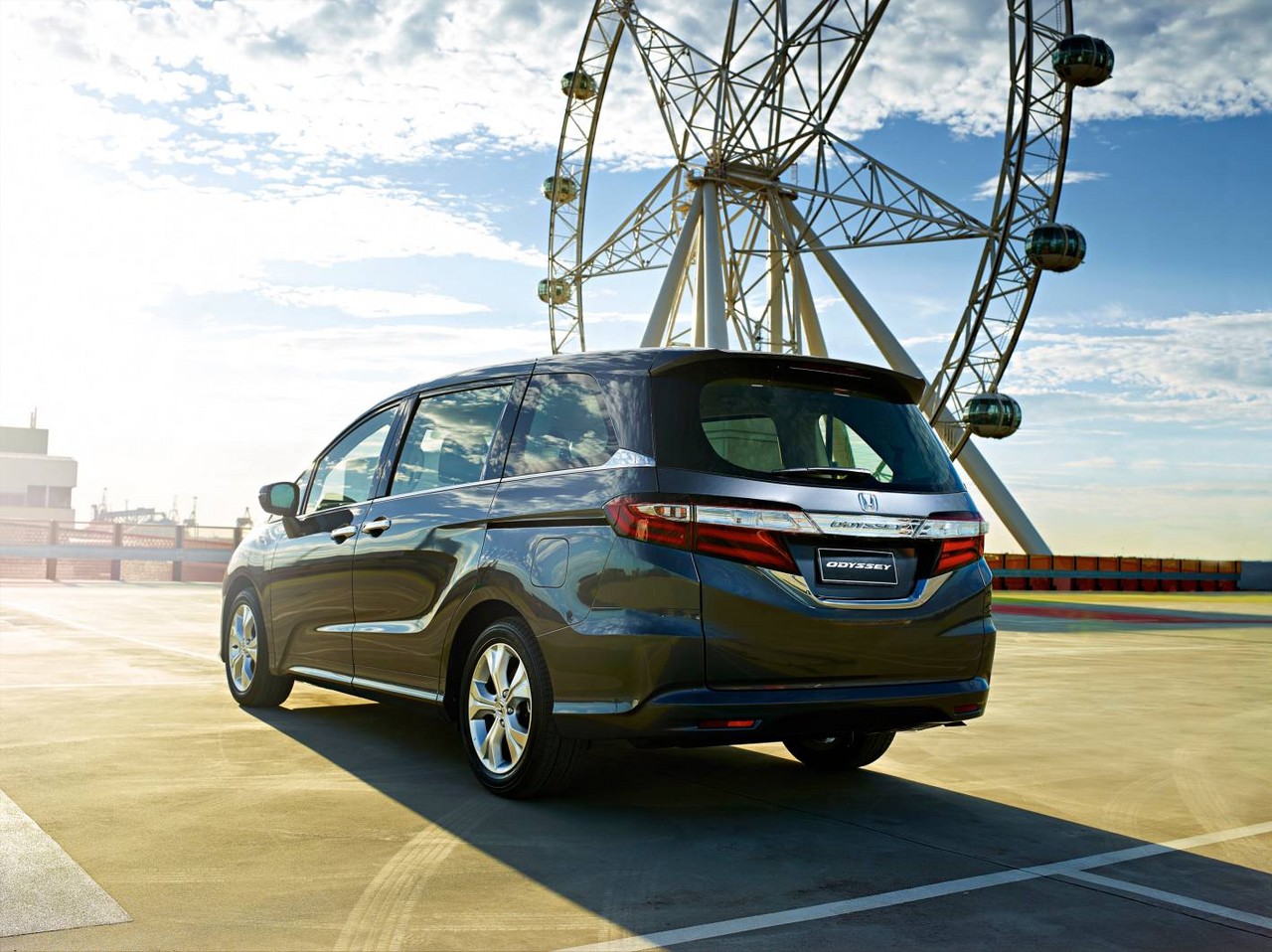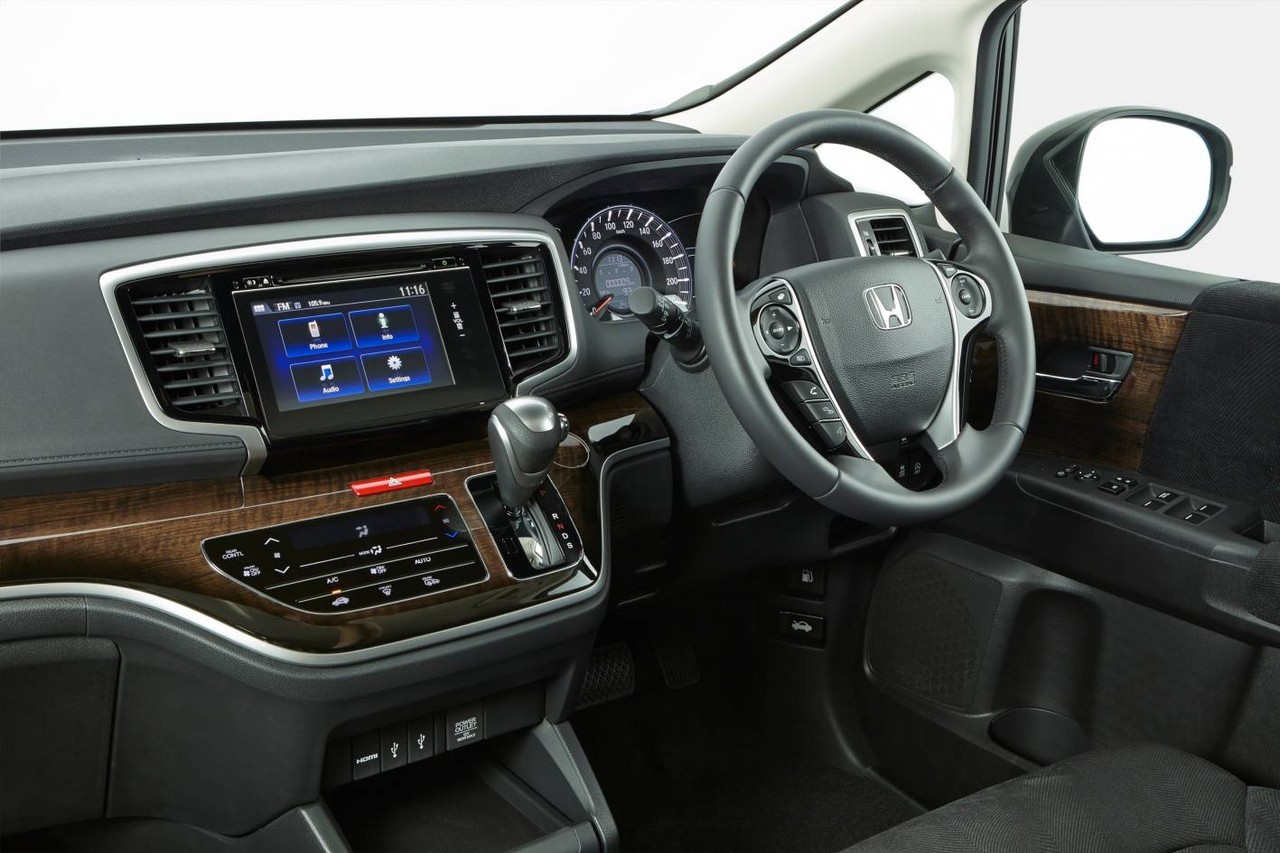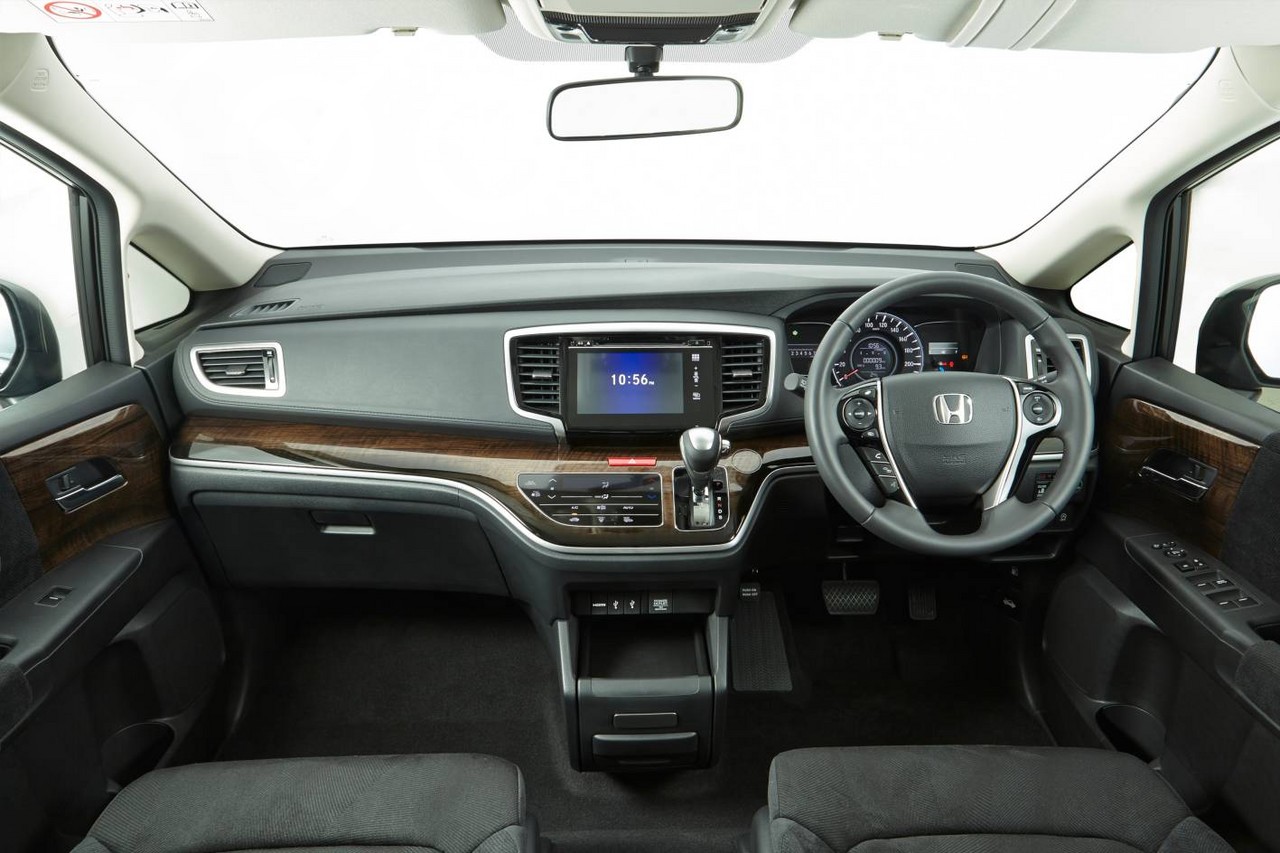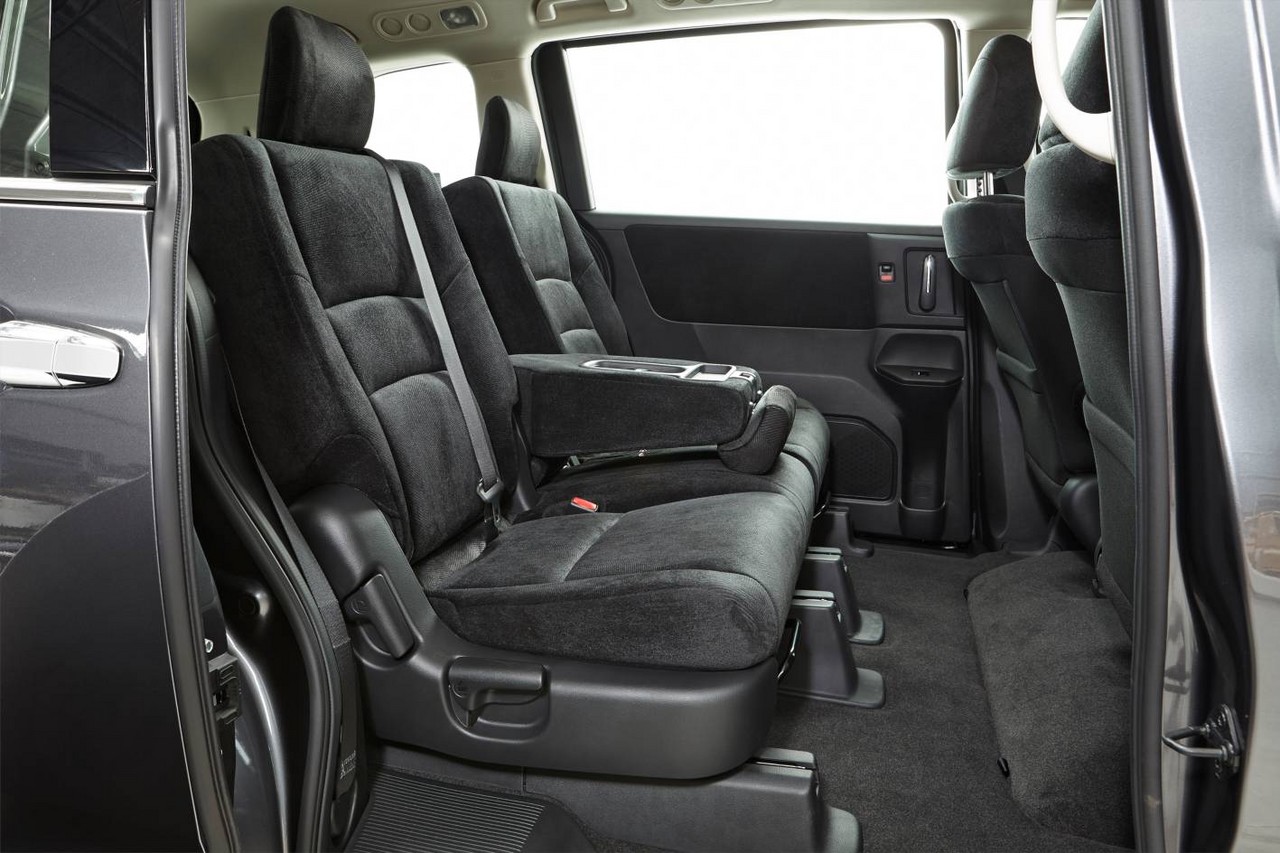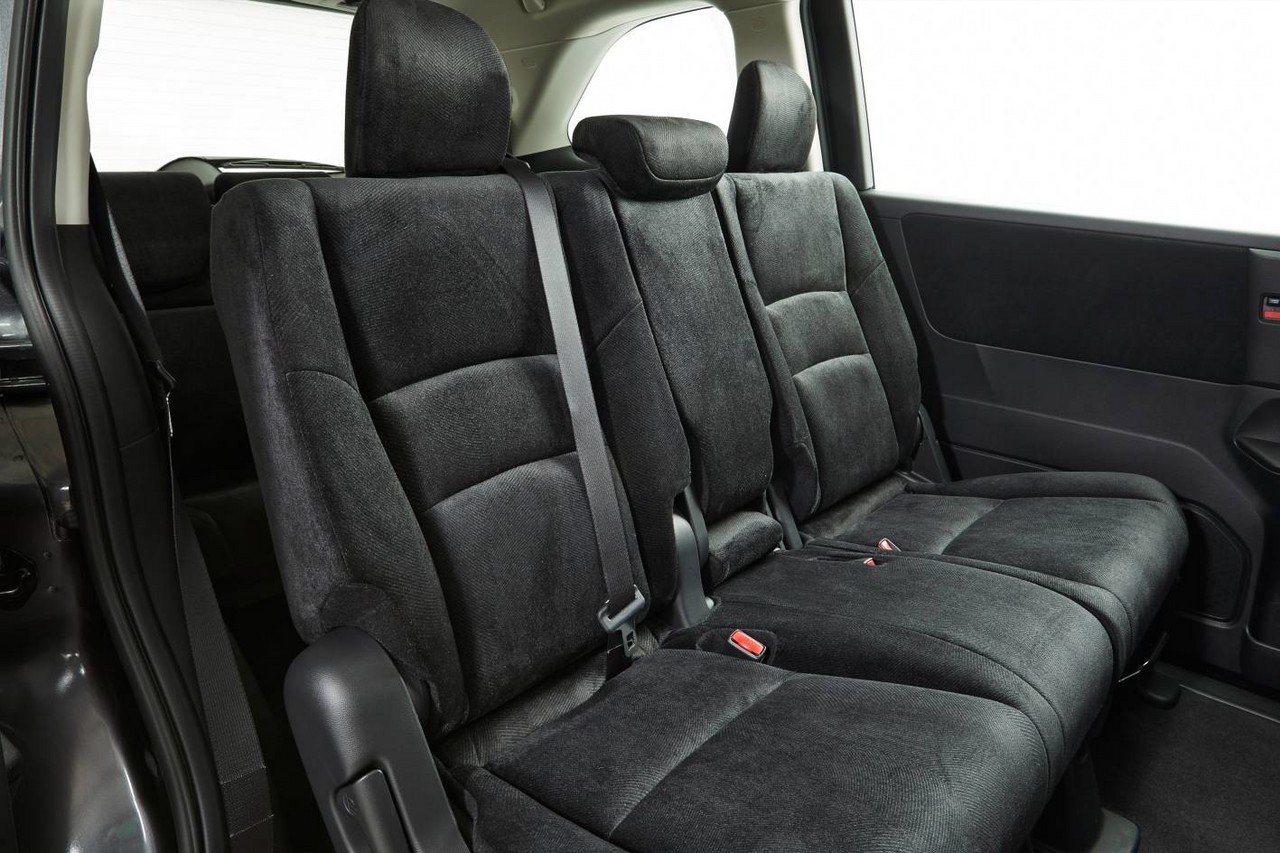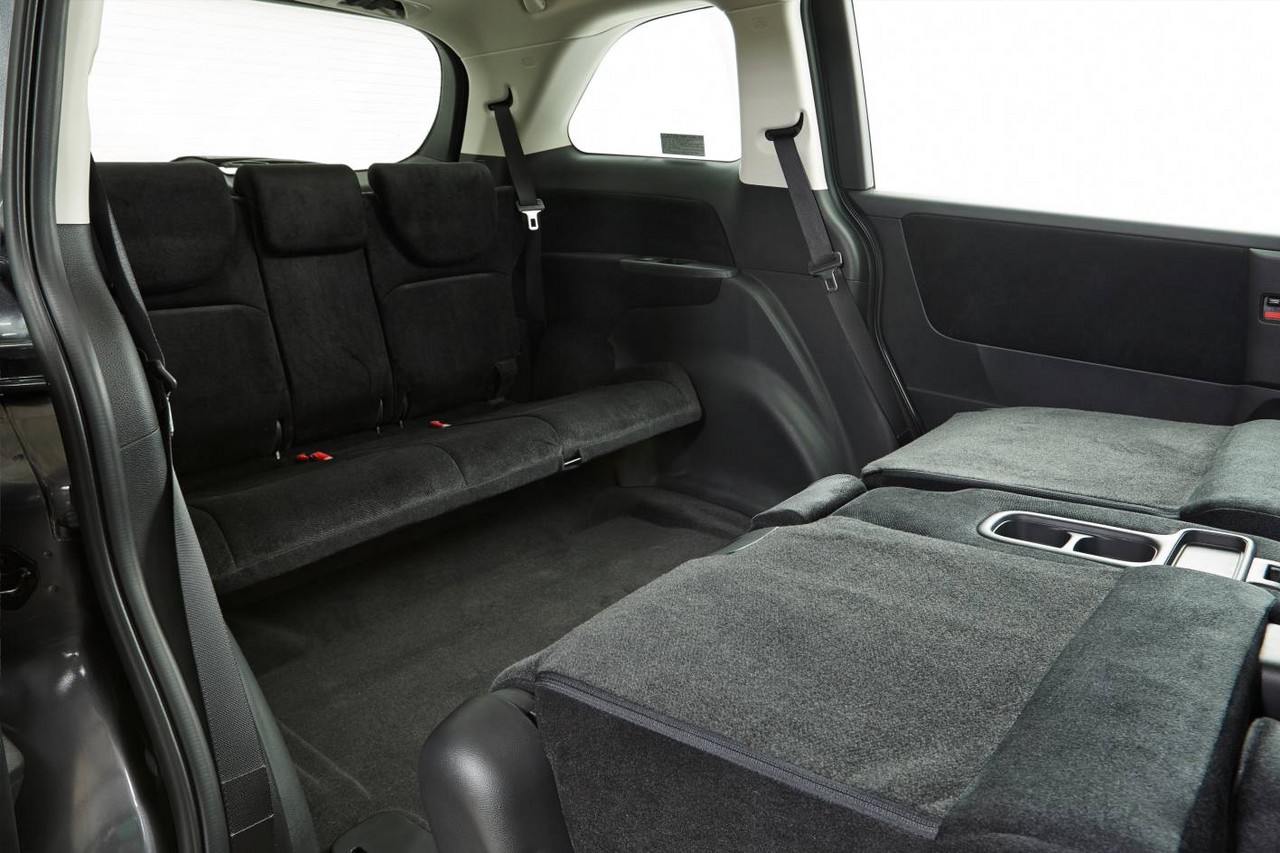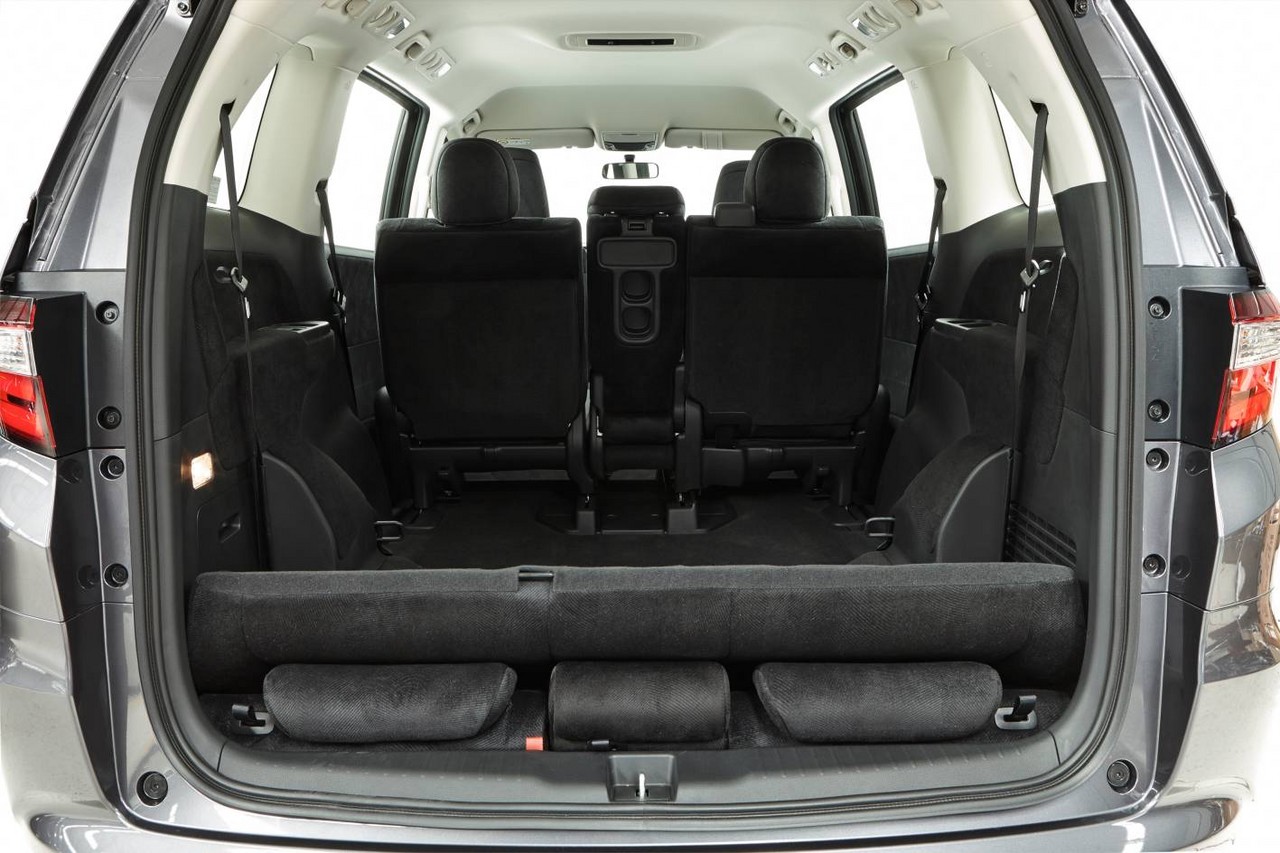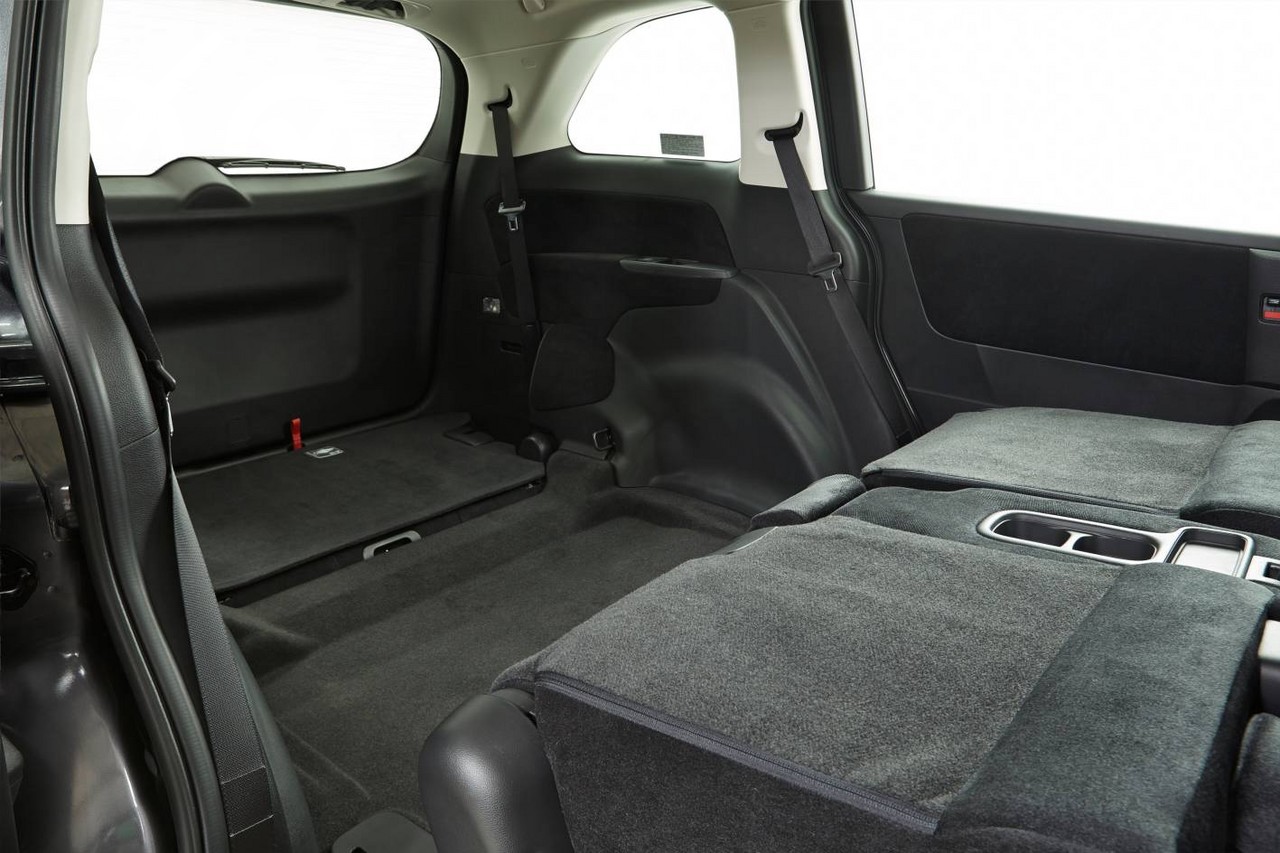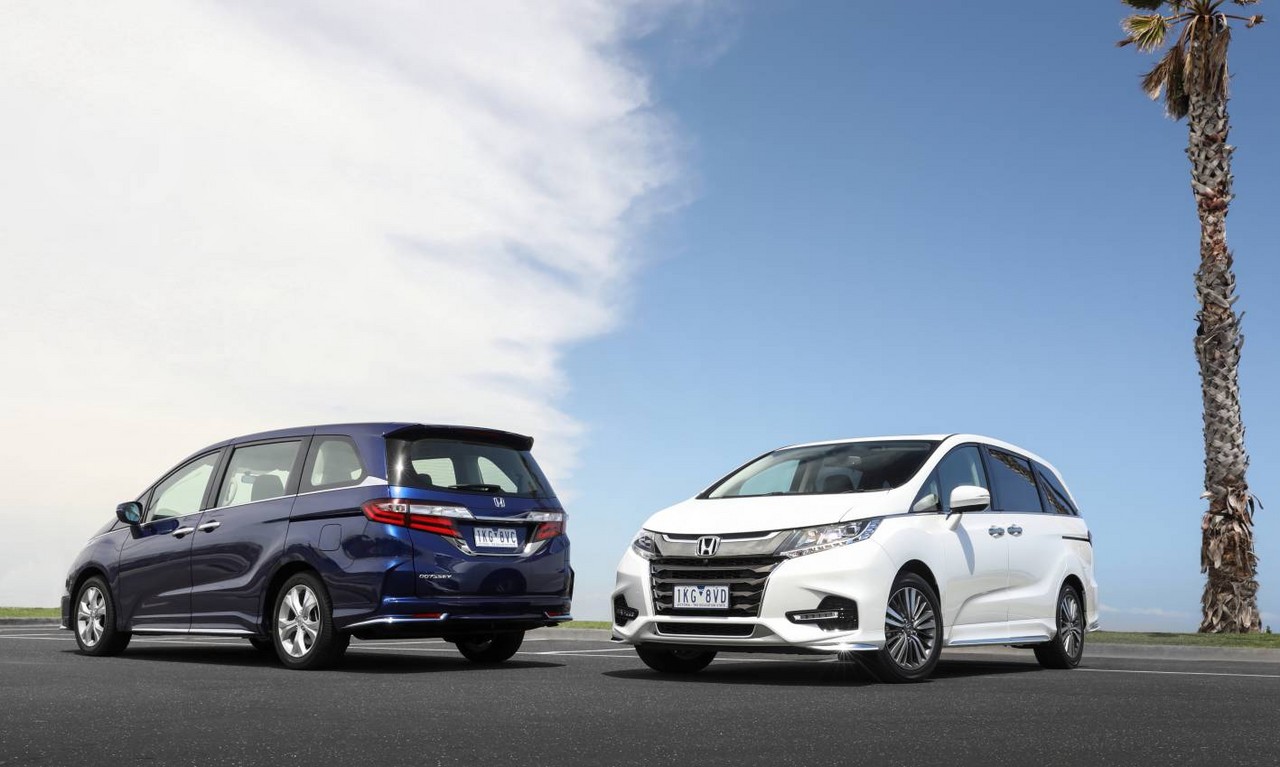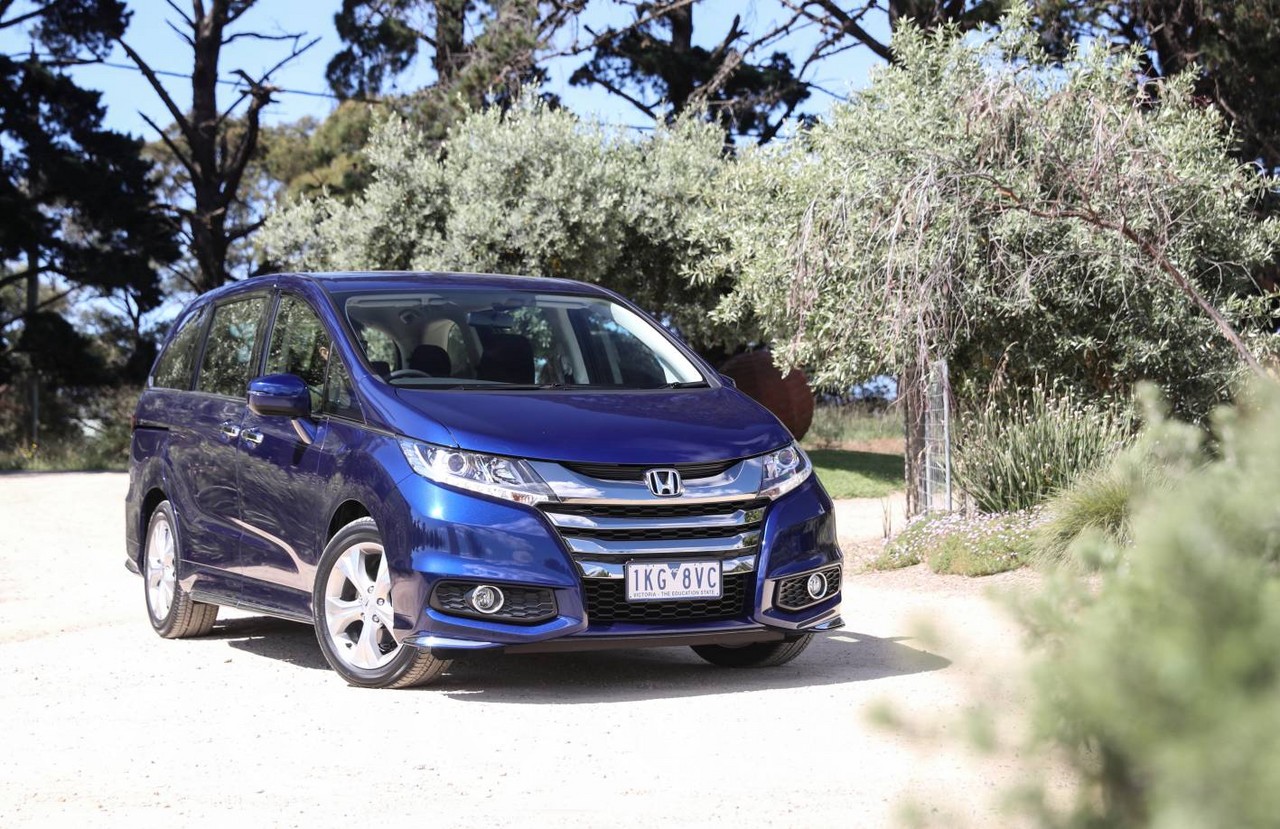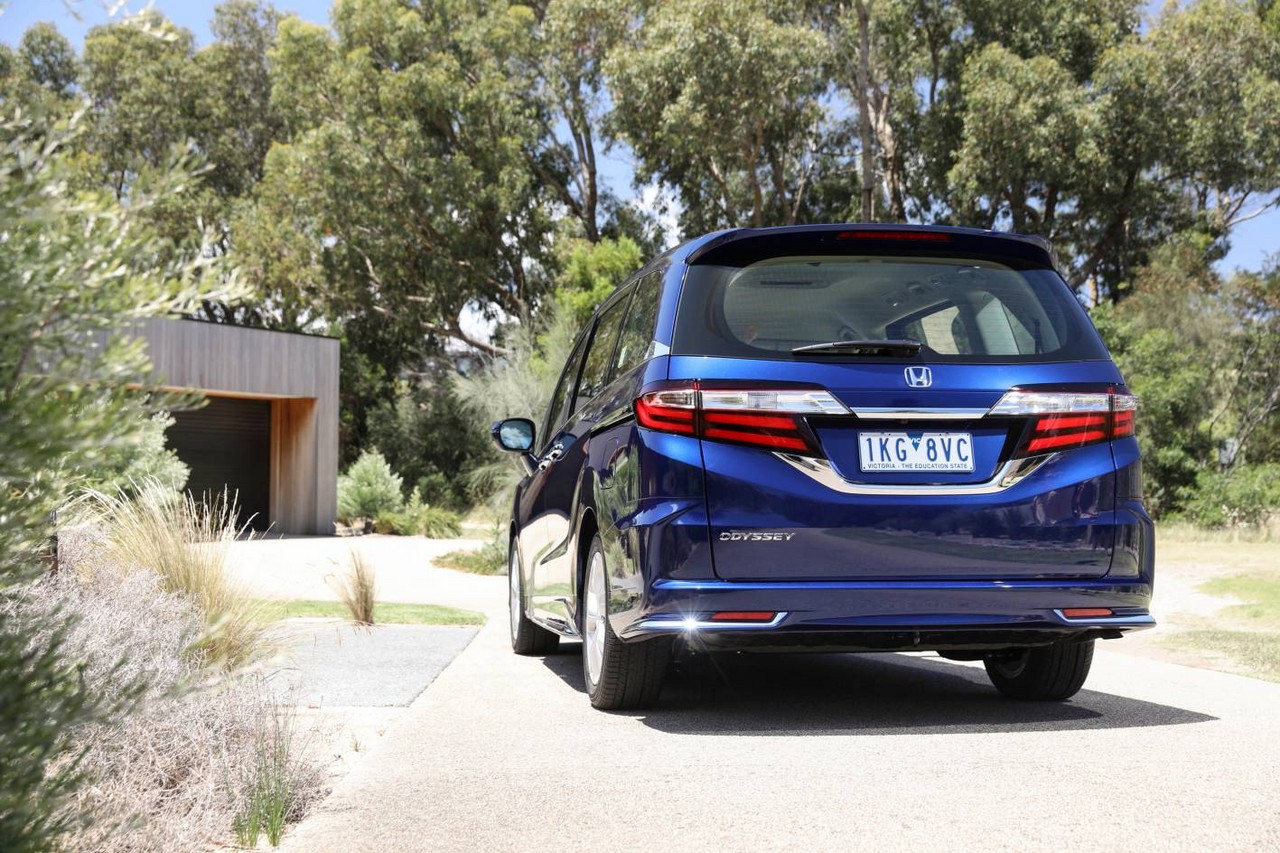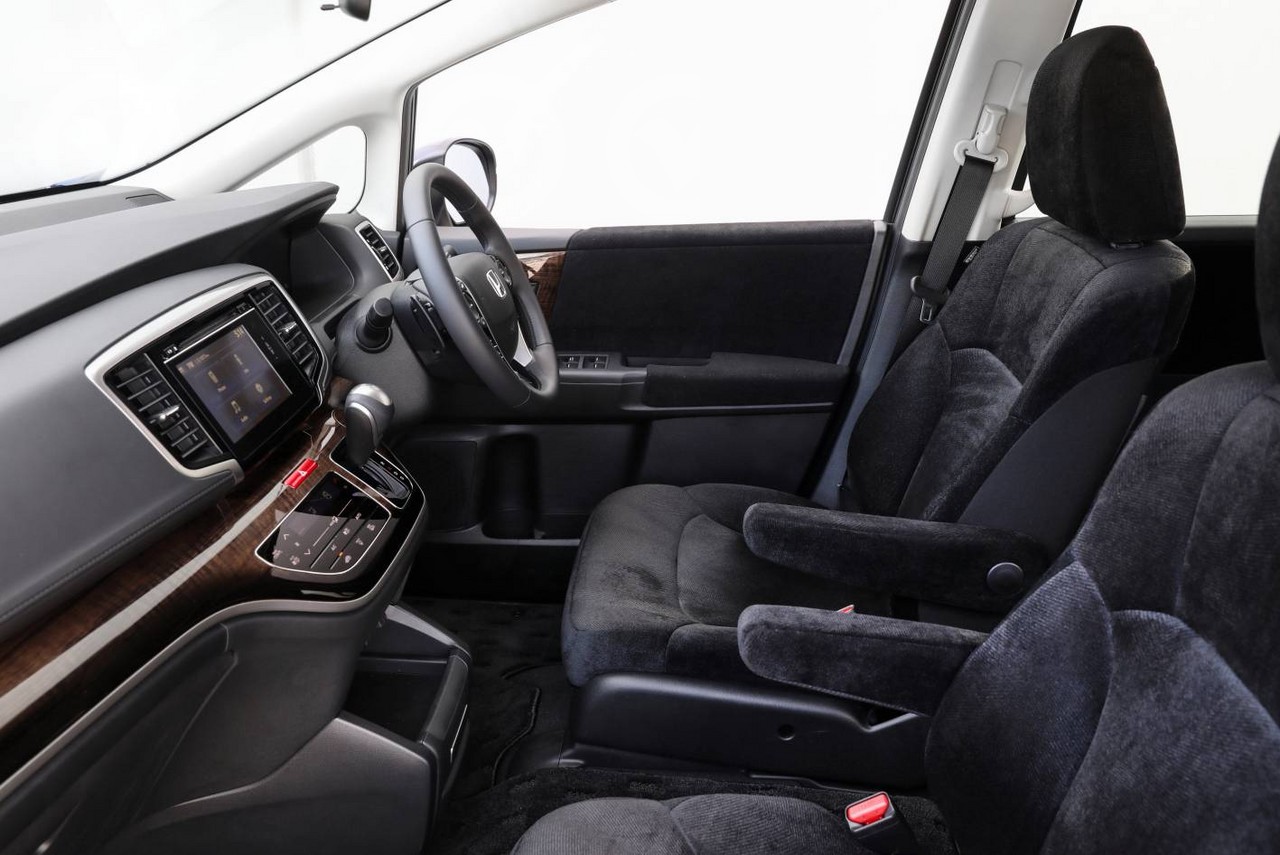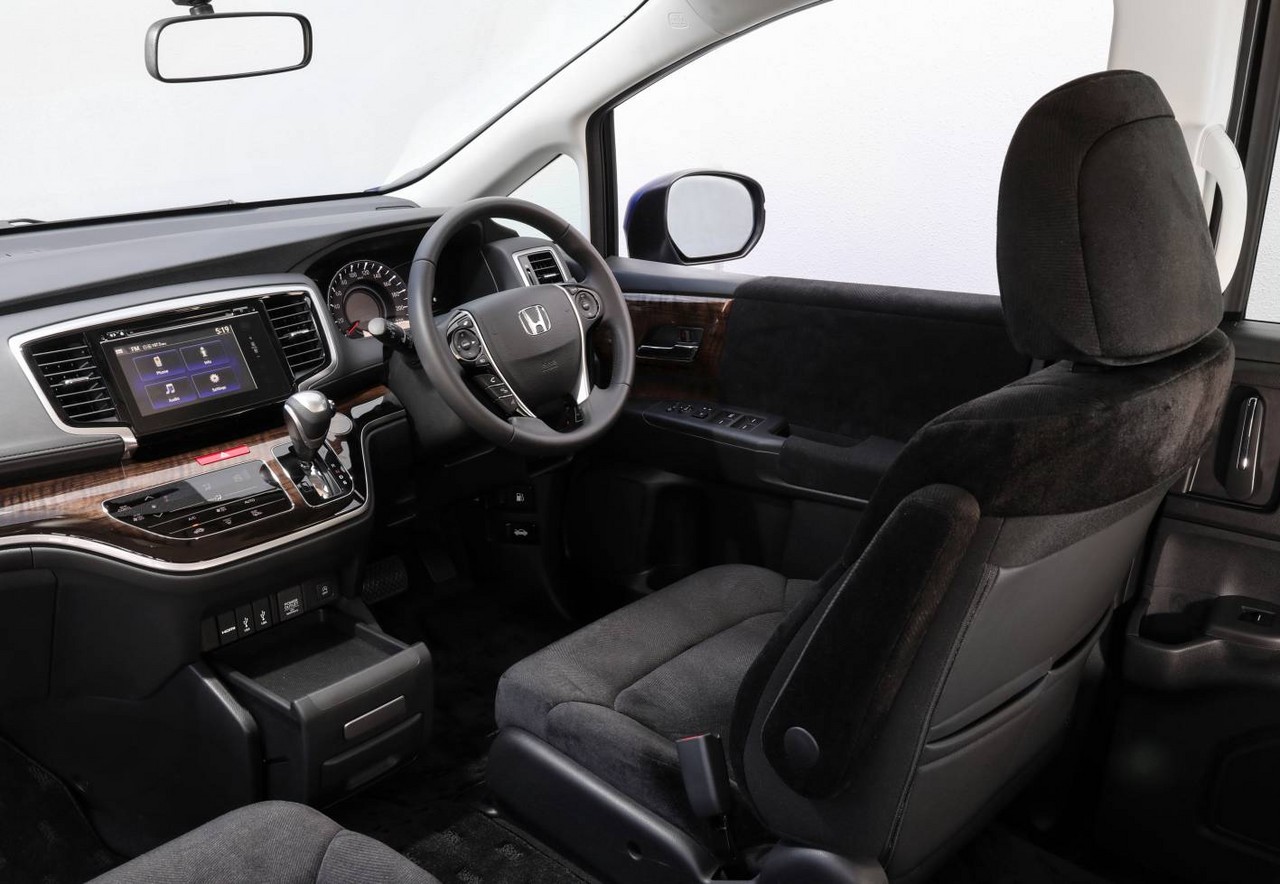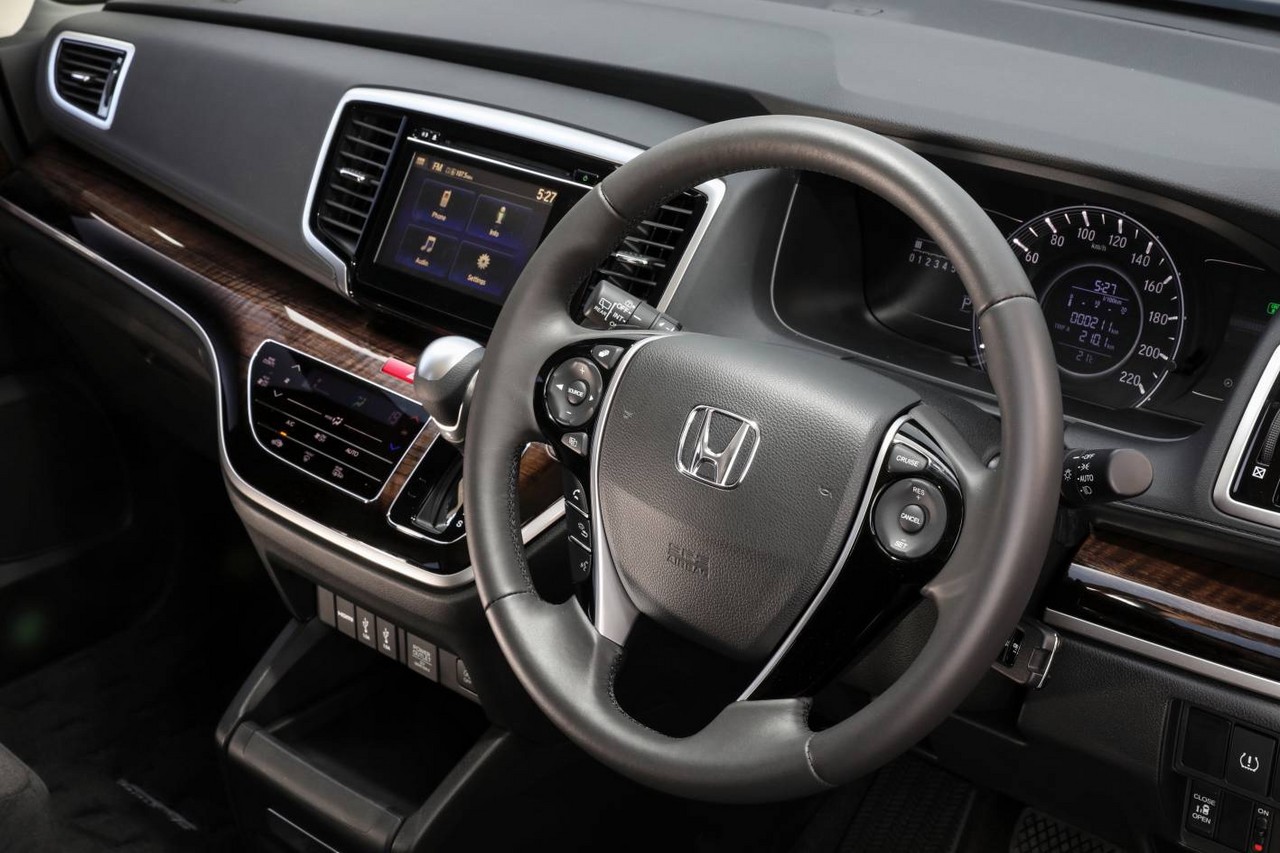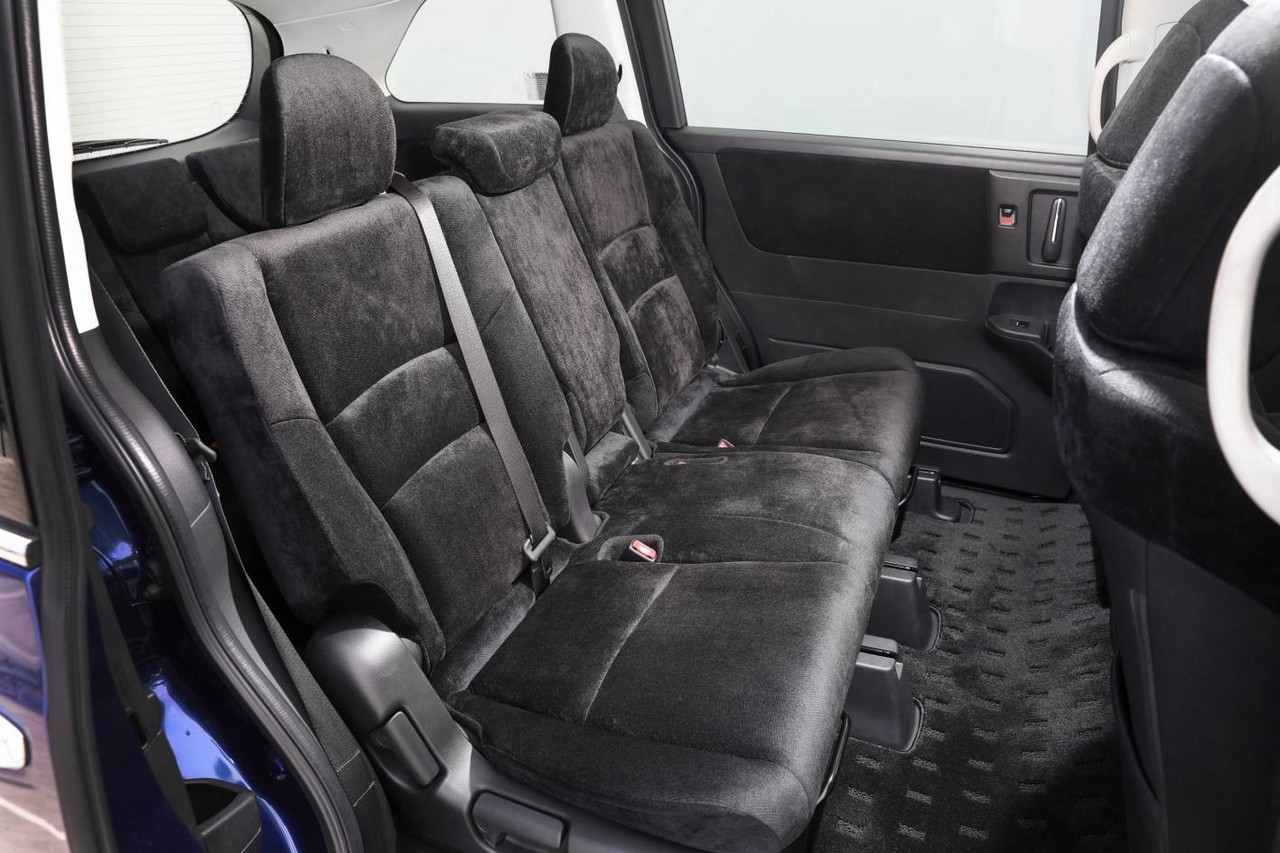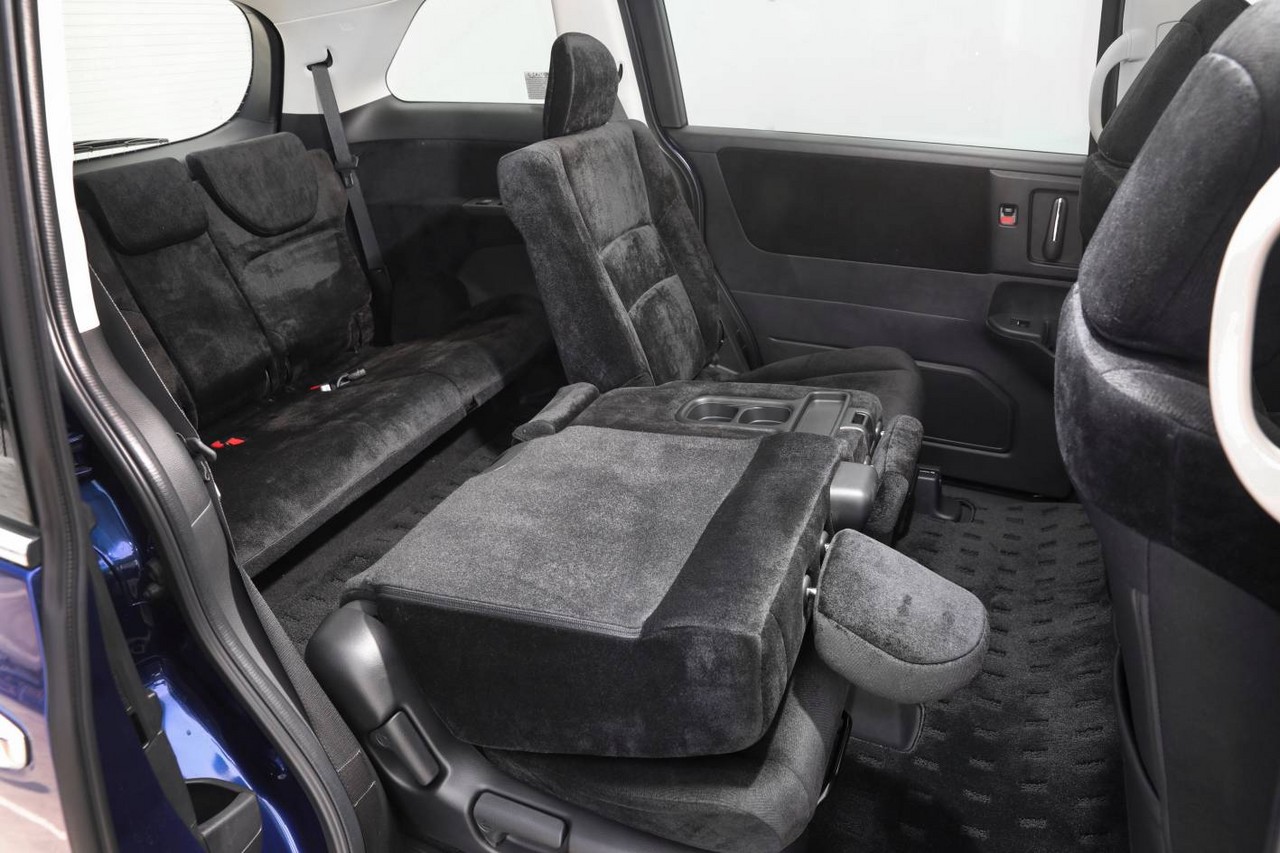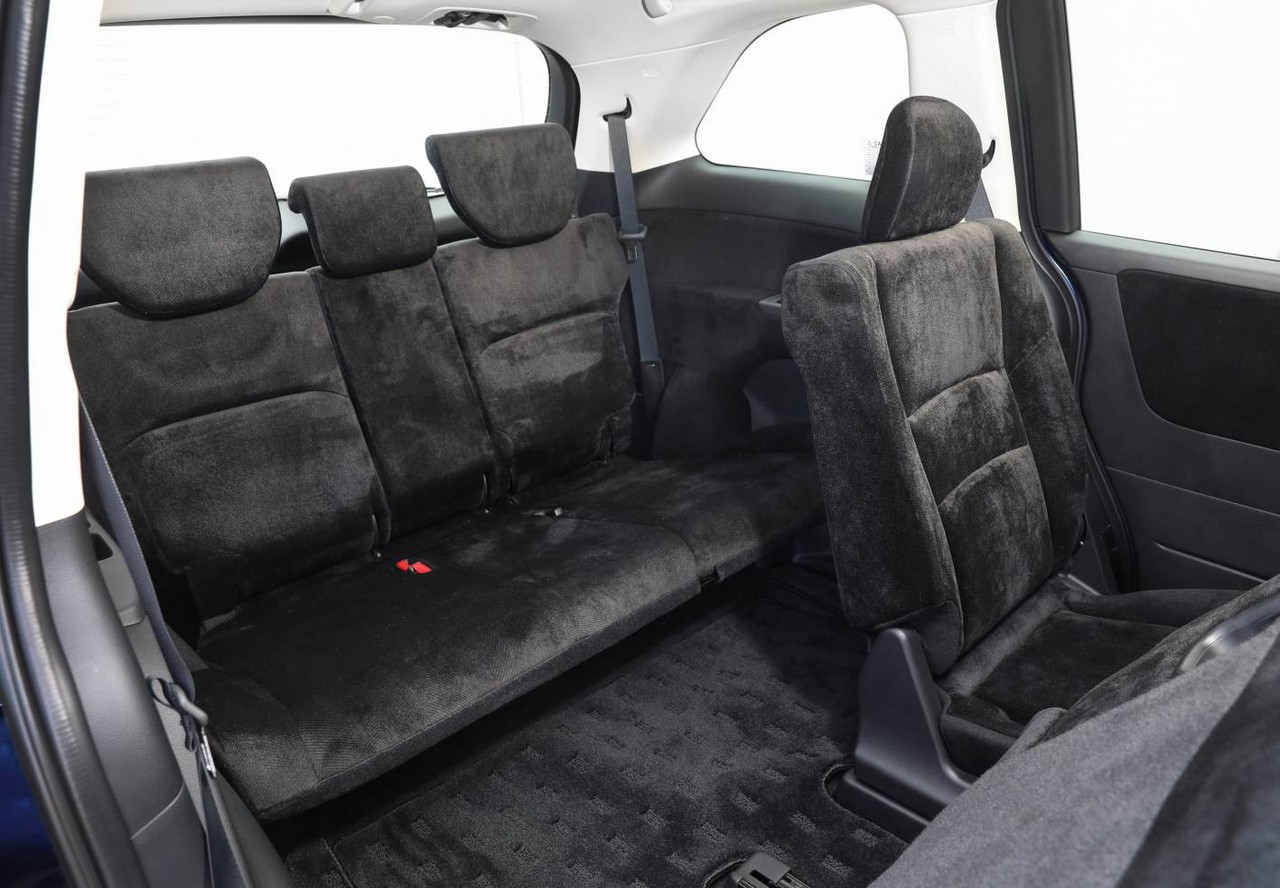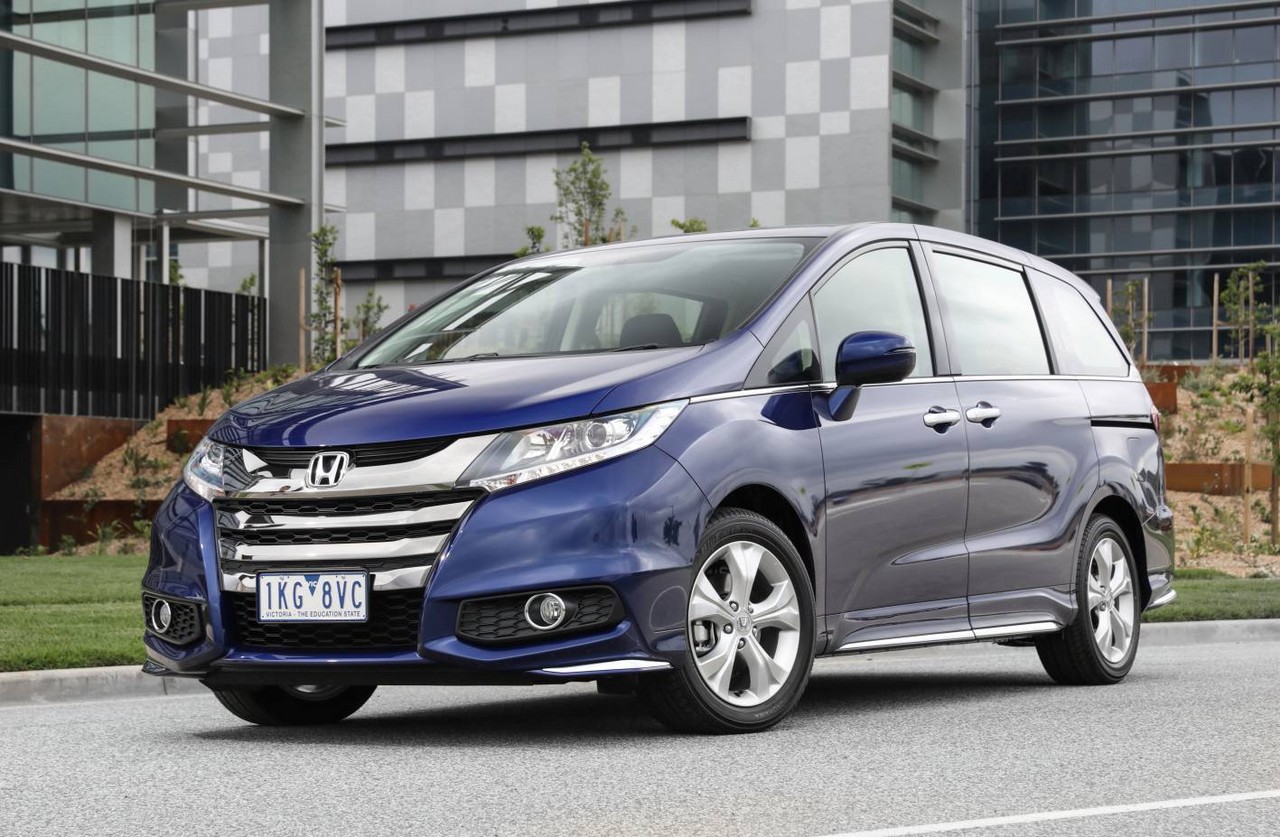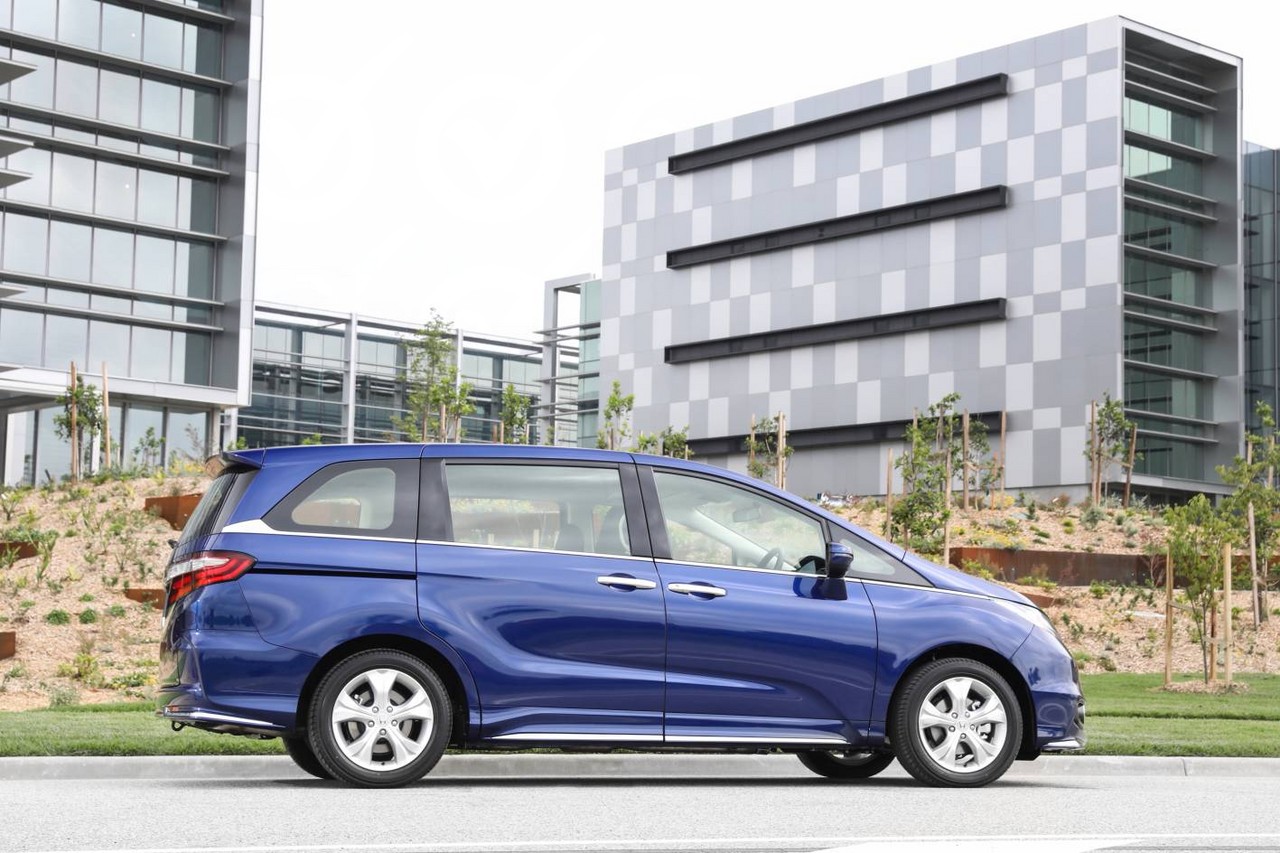
- Comfortable, spacious and versatile interior
- Economical four-cylinder engine
- High standard of fit and finish
- Sliding doors make for easy access
- Four-cylinder engine lacks low-rev torque
- Firm ride when unladen
- Easy to scrape doors on gutters
Review: Honda RC1.I Odyssey (2014-17)
Overview
Released in February 2014, the Honda RC1 Series I (RC1.I) Odyssey was a large, people mover. Manufactured in Sayama, Japan, the front-wheel drive Honda Odyssey was powered by a 2.4-litre four-cylinder petrol engine which was mated to a continuously variable transmission (CVT). As per the table below, the RC1 Odyssey range consisted of eight-seat VTi and seven-seat VTi-L variants.
From 1 July 2017, the Honda RC1 Odyssey was sold with a five year, unlimited kilometre warranty; if the vehicle was used for commercial purposes, however, the warranty was limited to five years or 140,000 kilometres, whichever came first.
K24W4 engine
Shared with the Honda CR3 Accord , the 2.4-litre K24W4 four-cylinder engine had a die-cast aluminium block, pressure-cast aluminium alloy cylinder head, double overhead camshafts (chain-driven), four valves per cylinder and a compression ratio of 10.1:1. The engine also featured Honda’s i-VTEC (intelligent Variable Valve Timing and Lift Electronic Control) system which consisted of:
- A VTEC system which adjusted valve lift, timing and duration of the intake valves for low- and high- rpm (i.e. above 5000 rpm) profiles; and,
- Variable Timing Control (VTC) which continuously adjusted the intake camshaft phase.
The K24W4 engine also had an ‘Idle Stop’ function which enabled it to shut down when the Odyssey was stationary in traffic and restart when the brake pedal was released.
| Variant | Engine | Trans. | Peak power | Peak torque |
|---|---|---|---|---|
| VTi, VTi-L |
2.4-litre K24W24 petrol I4 | CVT | 129 kW at 6200 rpm | 225 Nm at 4000 rpm |
Dimensions and body
Compared to the Honda RB3 Odyssey , the RC1 Odyssey was 30 mm longer (at 4840 mm), the same width (1800 mm), 150 mm taller (1695 mm) and had a 70 mm longer wheelbase (2900 mm); cargo capacity was 300 litres. While VTi variants had three second row seats, VTi-L variants were fitted with two ‘captain’s chairs’ which could slide forwards or backwards by up to 740 mm.
Unlike previous models, the RC1 Odyssey had sliding second row doors on both sides of the vehicle which had 1230 mm (height) by 750 mm (width) openings. For VTi variants, only the passenger side rear door had a power-operated, one-touch opening/closing; for VTi-L variants, both rear doors had this functionality.
Suspension
The RC1 Odyssey had MacPherson strut front suspension and torsion beam rear suspension with amplitude reactive dampers.
Safety equipment
Standard safety equipment for the Honda RC1 Odyssey included dual front airbags, front side airbags, full-length curtain airbags (i.e. for all three rows of occupants), ABS, electronic brake force distribution, brake assist, electronic stability control, traction control and front seatbelts with pretensioners and load limiters.
The Honda Odyssey VTi-L was further equipped with blind spot monitoring and a rear cross-traffic warning.
ANCAP crash testing
In ANCAP crash testing , the Honda RC1 Odyssey received a five star adult occupant protection rating with a score of 32.75 out of 37. In the offset crash test, protection of the driver’s head, chest and thighs were rated as good, though protection of the driver’s lower left leg and feet were rated as marginal. Maximum points, however, were awarded in the side impact and pole tests.
Features: Honda Odyssey VTi
Standard features for the Honda Odyssey VTi included 17-inch alloy wheels with 215/55 R17 98V tyres, a six speaker sound system with a CD player, MP3/WMA compatibility and auxiliary inputs, a seven-inch touchscreen with satellite navigation and an HDMI port, Bluetooth mobile phone connectivity and audio streaming, dual-zone climate control air conditioning, cloth seats, cruise control, a reversing camera, daytime LED running lights, automatic headlights, a three-seat second row bench, 40/20/40 split and folding third row seats, a leather-wrapped steering wheel, remote central locking, power windows and mirrors, a height and reach adjustable steering wheel, a height adjustable driver’s seat, tyre pressure monitoring, a trip computer and an immobiliser.
In February 2017, new split-pocket storage pockets were introduced on the back of the front seats.
Features: Honda Odyssey VTi-L
Relative to the Odyssey VTi, Honda Odyssey VTi-L variants were further equipped with three-zone climate control air conditioning, leather seats, an eight-way power adjustable driver’s seat, a four-way power adjustable front passenger seat, heated front seats, two sliding ‘captain’s chair’ second row seats with extending footrests, a 360 degree multi-view camera, Smart Parking Assist, directional LED headlights, front fog lights, a proximity key, power sunroof, courtesy lamps, rear door blinds and push-button start. Visually, the Odyssey VTi-L variants could be identified by their ‘aero’ front and rear bumpers, sports grilles and side skirts.
In February 2017, the Honda Odyssey VTi-L was updated with the following measures:
- The second-row ‘captain’s chairs’ were fitted with ISOFIX compatible anchorage points for child restraint systems;
- Privacy glass was introduced for the second row, third row and tailgate windows; and,
- The front fascia was revised with a dark chrome upper grille, black three-bar lower grille and darkened headlight housings.
Brochure
Related links
- Press Kit: Honda RC1 Odyssey (February 2014)
- Specifications: Honda RC1 Odyssey (February 2014)
- Honda News: Honda Australia Announces Pricing For The All-New Odyssey (February 2014)
Review: Honda RC1.II Odyssey (2017-on)
Overview
Released in Australia in December 2017, the Honda RC1 Series II (RC1.II) Odyssey introduced updated styling and ‘Honda Sensing’ driver-assist technologies for the Odyssey VTi-L (see ‘Safety equipment’, below).
Within the RC1.II Odyssey range, styling updates varied according to the variant –
- The Odyssey VTi gained the ‘aero’ front fascia that had previously been reserved for the Odyssey VTi-L and chrome surrounds for the new front fog lights; and,
- The Odyssey VTi-L had a new ‘premium aero package’ which consisted of ‘enhanced bumper shaping, pronounced aero forms’, LED fog lights and a dark chrome finish for the upper and lower grilles and door handles. The Odyssey VTi-L also received new two-tone 17-inch alloy wheels, a revised rear fascia, new badging and a tailgate applique.
Inside, the second row ‘captain’s chairs’ for the Odyssey VTi-L were fitted with larger headrests and additional seat-mounted storage compartments. Other interior changes for the Odyssey VTi-L included new trims for the instrument panel and doors, and a new start/stop button.
Honda also claimed noise, vibration and harshness (NVH) improvements for the RC1.II Odyssey, while the RC1.II Odyssey VTi-L had a maximum braked towing capacity of 1000 kg.
| Variant | Engine | Trans. | Peak power | Peak torque |
|---|---|---|---|---|
| VTi, VTi-L |
2.4-litre K24W24 petrol I4 | CVT | 129 kW at 6200 rpm | 225 Nm at 4000 rpm |
Safety equipment
Compared to the RC1.I Odyssey, the RC1.II Odyssey VTi-L was equipped with the following ‘Honda Sensing’ driver-assist technologies as standard –
- Forward Collision Warning (FCW) and Collision Mitigation Braking System (CMBS): operating at speeds above 15 km/h, FCW and CMBS used millimetre-wave radar and a camera located in the windscreen to monitor the road up to 100 metres ahead. If FCW detected that there was a collision risk with the vehicle ahead, a ‘Brake’ warning would flash in the Multi-Information Display and an audible warning would sound. In its second stage, CMBS would apply light braking to reduce vehicle speed and gently retract the driver’s seatbelt to alert the driver. In its final stage when a collision was assessed to be inevitable, CMBS would apply maximum braking force to reduce vehicle speed and the severity of the collision;
- Adaptive Cruise Control (ACC): when cruise control was active, ACC could reduce vehicle speed to maintain a specified distance from the vehicle ahead and could apply up to a quarter of the maximum braking force to slow the vehicle;
- Lane Departure Warning (LDW): operating at speeds from 72 km/h to 180 km/h, LDW used the monocular camera to monitor vehicle position within its lane. If the vehicle departed its lane without the turn signal having being activated, the driver would be alerted via a visual warning on the multi-information display and steering wheel vibrations;
- Road Departure Mitigation (RDM): active at speeds from 72 km/h to 180 km/h, RDM used the monocular camera to identify lane markings. RDM used steering force to help the Odyssey stay in its lane and, if the vehicle was detected leaving a lane marked by solid lines, braking force would be applied on one side of the vehicle. When RDM was activated, the driver would be alerted by visual warnings and steering wheel vibrations; and,
- Lane Keeping Assist System (LKAS): operating at speeds from 72 km/h to 180 km/h, LKAS used the monocular camera to detect lane markings. If the vehicle was drifting within its lane, LKAS used the Electric Power Steering (EPS) system to provide corrective steering, thereby assisting the driver to maintaining their position within the lane.
Features: Honda RC1.II Odyssey
Compared to its RC1.I predecessor, standard features for the Odyssey VTi-L were extended to include power folding door mirrors that would retract when the vehicle was locked.
Related links
